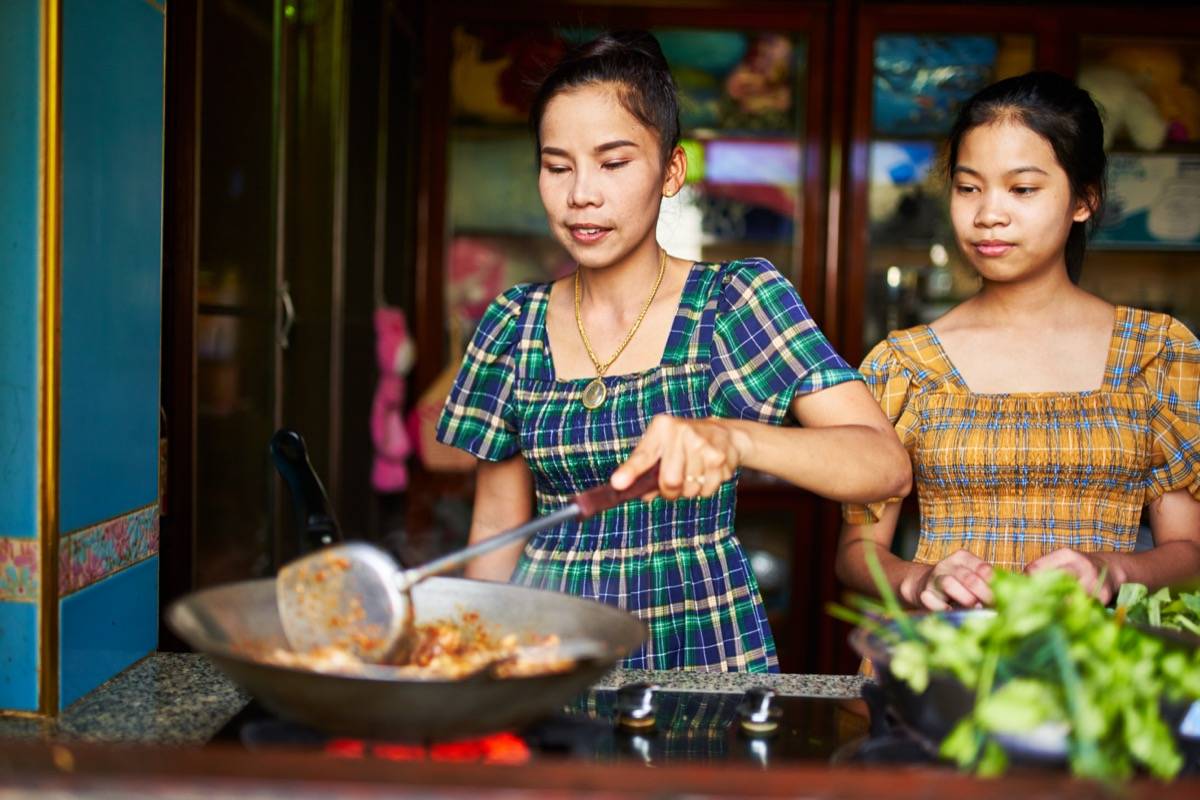Discover the rich history, traditions, and philosophies behind Chinese food in this enlightening exploration. It’s more than just takeout—it’s cultural storytelling.
What comes to your mind when you think about Chinese food? Is it the comforting familiarity of takeout boxes, the scorching heat of spicy Sichuan dishes, or perhaps the delicate artistry of dim sum? The diverse culinary landscape of China is not merely a collection of flavors and dishes; it embodies centuries of tradition, culture, and philosophy. This piece aims to dissect the unique layers of Chinese food, enabling you to appreciate its deeper meanings.
The Historical Context of Chinese Cuisine
Chinese food is a living chronicle of the nation’s history, often mirroring societal changes and regional variations. The roots of this rich culinary heritage stretch back over 5,000 years. Much of what you see today in Chinese cooking is shaped by dynastic influences, trade relations, and geographical diversity.
The Role of Geography
China’s vast territory encompasses multiple climates, landscapes, and ecosystems. The north focuses more on wheat-based products like noodles and dumplings, while the south emphasizes rice and seafood. How does this geographic diversity influence local food culture? Seasonal ingredients and climate variations lead to distinct culinary styles, enhancing the country’s rich tapestry of flavors.
Historical Events and Their Influence
Throughout history, events such as the Silk Road trade and colonial encounters have allowed the infusion of various ingredients and cooking techniques. For example, the introduction of chili peppers from the Americas transformed Sichuan cuisine into a vibrant palette of flavors. This melding of cultures is essential to understanding the profound depth of Chinese food.
Philosophical Underpinnings
Chinese cuisine is steeped in philosophy, particularly the principles of balance and harmony. You will find these concepts reflected in the careful consideration of flavors, textures, and colors in a dish.
Yin and Yang
The notion of Yin and Yang is fundamental in Chinese culture and extends deeply into its culinary practices. The balance between hot and cold, light and heavy, is crucial. For you, this means that a well-prepared Chinese meal is not just about satisfying hunger; it’s about achieving equilibrium within the body.
Five Elements Theory
The Five Elements Theory—wood, fire, earth, metal, and water—also influences the creation of Chinese dishes. Each element corresponds to different flavors and ingredients, leading to a harmonious plate. Understanding these principles allows you to appreciate the meticulous thought that goes into creating a meal.

Regional Variations: A Culinary Map
Chinese cuisine varies remarkably from region to region, shaped by local ingredients, climate, and cultural practices. Here’s a closer look at a few significant regional styles:
Cantonese Cuisine
Often deemed the most recognizable globally, Cantonese cuisine is known for its subtlety and freshness. Dishes are lightly flavored and often paired with seafood. Dim sum, a beloved practice of sharing small plates, plays a significant role here.
Sichuan Cuisine
Sichuan cuisine is renowned for its bold flavors and spicy heat. The use of Sichuan peppercorns creates a unique mouthfeel that pairs with various spices. If you relish intense flavors, Sichuan cuisine offers a culinary adventure that engages all your senses.
Hunan Cuisine
Similar to Sichuan, Hunan cuisine is known for its spiciness but differs in its use of fresh ingredients and curing techniques. Smoky flavors and a wide array of chili varieties characterize many dishes. Understanding Hunan cuisine will offer insights into the significance of smoking and curing in Asian culinary traditions.
Shandong Cuisine
As one of the oldest regional cuisines, Shandong cuisine often emphasizes seafood and the use of vinegar. Known for its strong flavors, this region’s dishes frequently feature stir-frying, allowing for quick cooking methods that maintain ingredient integrity.
Jiangsu Cuisine
Jiangsu cuisine is famous for its delicate and refined flavors. Dishes from this region often feature techniques like braising and stewing, enabling the infusion of rich flavors. Consider the artistry behind presenting these dishes, as visual appeal plays a significant role.
The Cultural Significance of Chinese Food
Food in China is far more than a necessity—it’s a manifestation of social ties and familial bonds. Meals are steeped in festivals and rituals that highlight cultural significance.
Family and Social Connections
In many families, the act of dining together symbolizes unity and harmony. Dishes are often served family-style, promoting shared responsibility and conversation. For you, this offers a unique opportunity to understand not just what is on the plate but also the intent behind gathering around it.
Festivals and Traditional Foods
Festivals like the Lunar New Year, Mid-Autumn Festival, and Dragon Boat Festival play pivotal roles in shaping culinary traditions. Each occasion boasts specialized dishes, such as mooncakes for the Mid-Autumn Festival or dumplings for the Lunar New Year. These foods encapsulate rich myths and local legends, drawing families and communities closer.

Culinary Techniques and Their Importance
Chinese cooking methods are as diverse as its ingredients. A deep understanding of these techniques can enhance your appreciation for the cuisine.
Stir-Frying
This method is perhaps the most celebrated in Chinese cuisine. It allows for a quick cooking process while preserving the color and nutrients of fresh vegetables. The skill involved in achieving the perfect stir-fry is not to be underestimated; it requires precise timing and high heat.
Steaming
A staple method that symbolizes healthy cooking, steaming allows for the preservation of the ingredient’s original flavor. Dishes like dumplings exemplify how steaming can elevate a simple ingredient to greater heights. This technique emphasizes the belief that food should be nourishing—not just in taste, but also in health benefits.
Braising
Braising is another essential technique often used in Chinese cooking. It combines both moist and dry heat, leading to tender and flavorful dishes. Understanding how braising extends the depth of flavor in a meal offers insights into the cooking process that many might overlook.
The Aesthetics of Chinese Food
Presentation is crucial in Chinese cuisine. The visual appeal of a dish enhances your dining experience and reveals deeper cultural meanings.
Color, Texture, and Flavor
A traditional Chinese meal often incorporates a variety of colors and textures. Each dish is thoughtfully arranged to create a visually stimulating experience. You may notice that this emphasis on appearance goes hand-in-hand with the deeper philosophy of balance—bringing together contrasting elements creates a harmonious experience.
The Art of Plating
In some restaurants, particularly those focusing on fine dining, the presentation can resemble a work of art. Each element is carefully placed to highlight its beauty, merging culinary skills with artistic expression. For the diner, this reflects the effort involved in creating a meal worthy of appreciation.

The Future of Chinese Cuisine
As globalization continues to influence food culture, Chinese cuisine is evolving while retaining its core principles. You might observe a blend of traditional and contemporary approaches that challenge and enhance the culinary landscape.
Fusion Foods
Innovative chefs are experimenting by merging traditional Chinese flavors with cuisines from around the world, leading to exciting dishes that attract a diverse audience. This blend challenges cultural boundaries and allows for an exchange of culinary techniques that enrich both traditions.
Health Consciousness
A growing focus on health is also prompting changes in Chinese cuisine. Plant-based dishes, organic ingredients, and reduced sugar levels reflect a shift toward healthier lifestyles. By understanding this trend, you can embrace a more modern interpretation of traditional meals.
Conclusion: Embracing the Depth of Chinese Food
Chinese food offers a gateway to understanding profound cultural, historical, and social dimensions. By taking the time to appreciate not just the taste but also the philosophies and traditions behind the cuisine, you enhance your experience and understanding.
As you appreciate the flavors, techniques, and stories behind each dish, you forge a deeper connection with a culture that has thrived for millennia. In essence, every bite of Chinese food invites you into a world rich with meaning.


